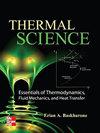再生砖骨料混凝土损伤机理研究
IF 1.1
4区 工程技术
Q4 THERMODYNAMICS
引用次数: 0
摘要
用再生砖骨料代替天然骨料具有很大的环保潜力。为研究再生砖骨料混凝土的劣化机理,设计了8组不同水灰比、最大骨料粒径和粗骨料型比的再生砖骨料亚轻量化混凝土,进行力学性能试验,分析再生砖骨料混凝土的骨料界面特性和损伤机理。结果表明:替代比和水灰比的增大导致混凝土抗压强度和劈裂抗拉强度显著降低,最大骨料粒径对强度的影响较小;与再生混凝土骨料-砂浆界面不同,再生砖骨料-砂浆界面微观结构致密,界面性能增强。再生砖骨料混凝土处于无界面损伤模式,砖骨料强度是决定混凝土力学性能的主要影响因素。本文章由计算机程序翻译,如有差异,请以英文原文为准。
Damage mechanism of concrete with recycled brick aggregate
WIt has great environmental potential to replace natural aggregates by recycled brick aggregates. To investigate the deterioration mechanism of recycled brick aggregate concrete, this paper designed eight groups of recycled brick aggregate sub-lightweight concrete with different water-cement ratios, maximum aggregate sizes and coarse aggregate type ratios, and carried out mechanical property test to analyze the aggregate interface characteristics and the damage mechanism of recycled brick aggregate concrete. The results show that the increase of replacement ratio and water-cement ratio leads to a significant decrease of compressive strength and splitting tensile strength of concrete, and the influence of the maximum aggregate size on strength is small. Unlike the recycled concrete aggregate - mortar interface, the microstructure of recycled brick aggregate - mortar interface is dense and the interface performance is enhanced. Recycled brick aggregate concrete is in non-interface damage mode, and the strength of brick aggregate is the main influence to determine the mechanical properties of concrete factor.
求助全文
通过发布文献求助,成功后即可免费获取论文全文。
去求助
来源期刊

Thermal Science
工程技术-热力学
CiteScore
2.70
自引率
29.40%
发文量
399
审稿时长
5 months
期刊介绍:
The main aims of Thermal Science
to publish papers giving results of the fundamental and applied research in different, but closely connected fields:
fluid mechanics (mainly turbulent flows), heat transfer, mass transfer, combustion and chemical processes
in single, and specifically in multi-phase and multi-component flows
in high-temperature chemically reacting flows
processes present in thermal engineering, energy generating or consuming equipment, process and chemical engineering equipment and devices, ecological engineering,
The important characteristic of the journal is the orientation to the fundamental results of the investigations of different physical and chemical processes, always jointly present in real conditions, and their mutual influence. To publish papers written by experts from different fields: mechanical engineering, chemical engineering, fluid dynamics, thermodynamics and related fields. To inform international scientific community about the recent, and most prominent fundamental results achieved in the South-East European region, and particularly in Serbia, and - vice versa - to inform the scientific community from South-East European Region about recent fundamental and applied scientific achievements in developed countries, serving as a basis for technology development. To achieve international standards of the published papers, by the engagement of experts from different countries in the International Advisory board.
 求助内容:
求助内容: 应助结果提醒方式:
应助结果提醒方式:


